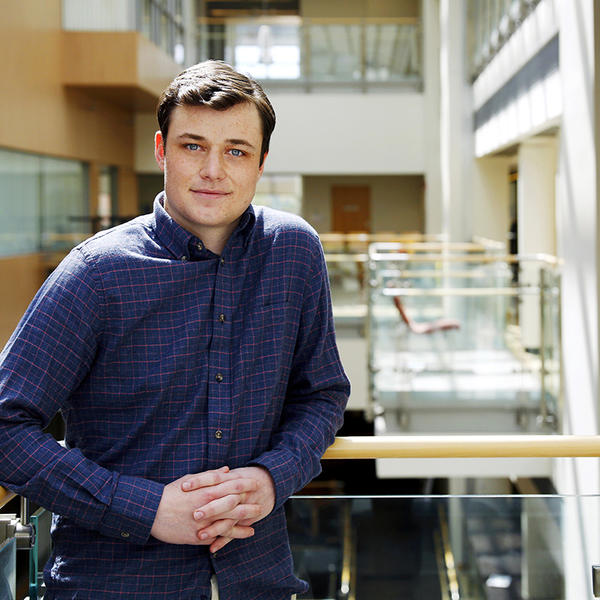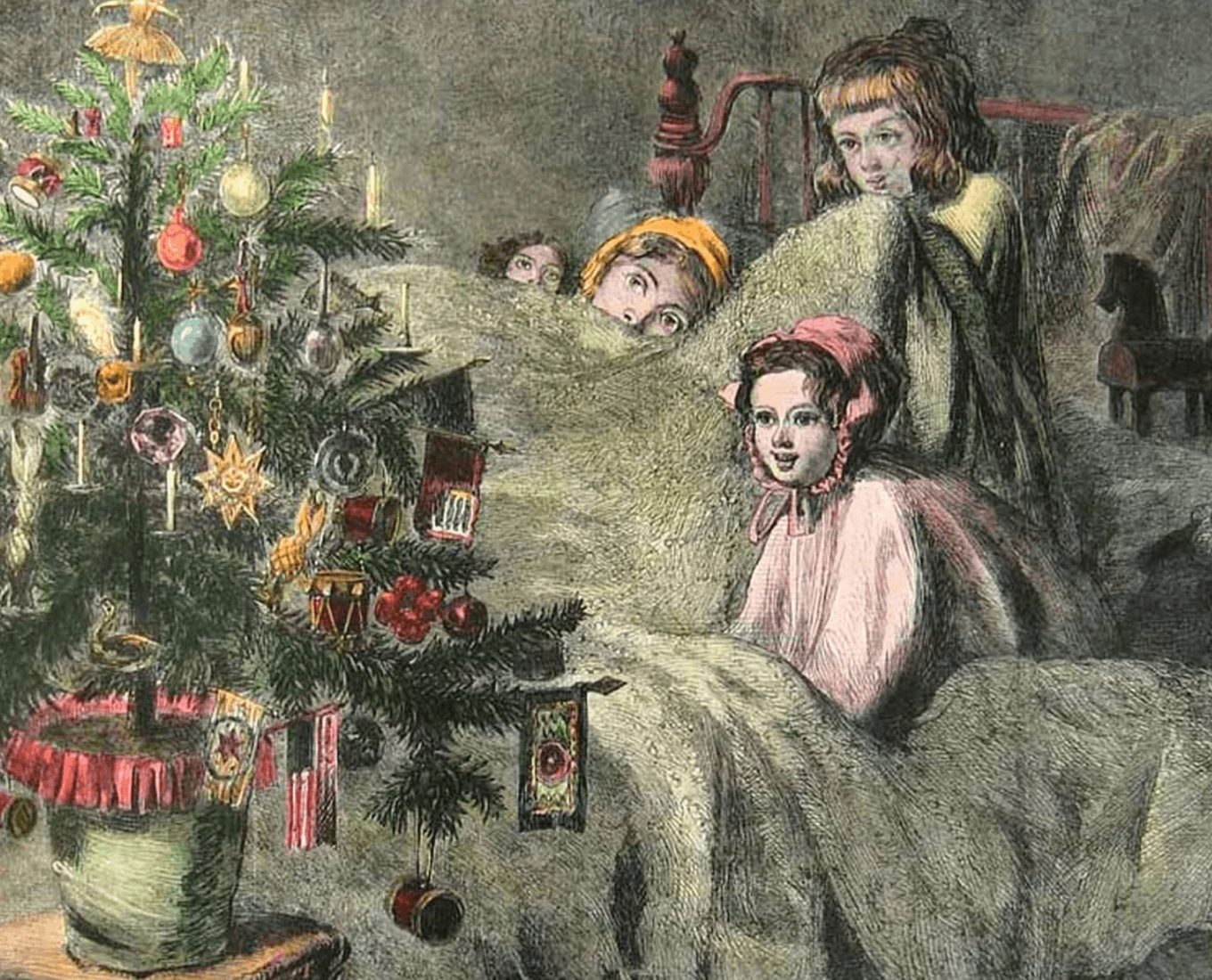As a student biologist, it could be easy to get lost in lab work and computer modeling, but this year's Fenwick Scholar, Charles Millard '22, is focused on the big picture — he knows that science is only part of the equation. As he starts his senior year, he'll be examining opportunities to modify a protein that could lead to novel HIV treatments, while also working with community organizations that support HIV-positive people in order to incorporate their perspectives in his research and better understand potential barriers to treatment that disproportionately affect certain communities, such as those of color, in the United States. Millard believes that combining these two efforts could impact access to existing therapeutics, as well as the success of novel treatment implementation —considering everything from drug design and development to drug accessibility, distribution and perception in the community.
The College's highest academic honor bestowed upon a student, the Fenwick Scholar spends their senior year researching, working closely with advisors and producing a final product that culminates in a presentation to the community. As he begins his project, we sat down with Millard — a biology major at Holy Cross — to learn more about his goals for the year ahead.
How would you describe your research in a nutshell?
In the "Sheehy Lab," we research a protein called APOBEC3G and its role as an innate system of cellular defense against HIV. While HIV has evolved to counteract the antiviral effects of this protein, exploring ways to liberate APOBEC3G from viral suppression could provide novel therapeutic options. My work will entail both experimental inquiry and computational analysis to characterize the structure-function relationship of an unusually potent variant of APOBEC3G. We hope to gain insights into the basis for this form's improved antiviral capabilities, which could ultimately be applied in the rational design of novel HIV treatments.
To better understand the broader impact of the HIV pandemic, I will simultaneously volunteer at AIDS Project Worcester (APW), a local nonprofit that provides services to community members living with HIV. Through my work at APW, I hope to learn how I can best serve HIV-positive people and the agencies that support them to ensure they have access to the therapeutics they need. I plan to perform a formal case study, including interviews with APW clients and reviews of relevant literature, which will seek to understand the intersectional basis for the disproportionate impact of the HIV pandemic on communities of color in the United States, with a specific focus on disparities in treatment. I hope that through this work, I can better incorporate the concerns and desires of people living with HIV into my current and future scientific research endeavors.
How did you become interested in biology as a major, and how did you first realize the relationship this could have with computer modeling?
I was very fortunate to work alongside Dr. April Burch, the director of my high school's advanced math/science research program, to design proteins for the treatment of Huntington's disease. Dr. Burch also helped me secure a summer internship at Yale School of Medicine, where I worked with Dr. Shannon Whirledge to study how the drug ulipristal acetate works. These experiences reinforced my lifelong infatuation with science and fostered my passion for molecular biology and bioengineering in particular, but I remained intrigued by the broader field of biology. This general interest in biology made the biology major at Holy Cross appealing to me, as the program requires completion of introductory courses in organismal biology and ecology, while still allowing me to take a larger number of courses focused specifically on cell and molecular biology. This breadth of focus has allowed me to explore a variety of subdisciplines in biology and discover passions I had never considered, such as computational biology.
While I was unable to perform research in person last summer, the College's online research program provided me the time and resources I needed to learn how to model proteins in three dimensions. A protein's shape is a crucial determinant of its capabilities, making visualization of the protein's structure a valuable tool when attempting to explain its experimentally observed functions and designing drugs to alter said functions. This experience ultimately led to a collaboration between the Sheehy Lab and Dr. Celia Schiffer’s lab at University of Massachusetts Medical School. As part of this cooperation, I was fortunate enough to study under Shurong Hou, a postdoctoral researcher in that lab. These opportunities have greatly increased my abilities in computer modeling, allowing it to become an integral tool in our research.
You have worked extensively with professor of biology Ann Sheehy while at Holy Cross — can you explain the importance of her mentorship in your project?
Dr. Sheehy's mentorship has been vital to my growth as a scientist, but she has had an even bigger impact on my growth as a person. Through her example, Dr. Sheehy has continuously taught me that being a good person requires one to actively combat injustice by challenging someone when they say or do something we believe to be unjust or, most importantly, looking within ourselves and asking if our actions are truly making the world a better place. Dr. Sheehy's influence has inspired me to actively try to work on behalf of, and alongside, others to improve their lives as well as the world we share. More specifically, Dr. Sheehy has shown me the necessity of being a citizen-scientist. In essence, this means that, while objectivity and impartiality are important in science, we must speak out and take sides when the knowledge and platform we possess can be used to assist marginalized communities.
In addition to your work in the lab and with computer modeling, you plan to work with AIDS Project Worcester. What will you be doing and how is this integral to the overall success of your project?
I will work with AIDS Project Worcester this summer to plan how I can be most useful to their organization. I hope to work alongside people living with HIV in order to gain a better understanding of their daily realities, while interviewing some of APW's clients about their access to, and experiences with, treatment, as well as what they might hope to see in future therapeutics. This might include asking what side effects might be more likely to disrupt adherence to their treatment regimen or which methods of administration are most convenient. This information could then be used throughout the process of future drug design in the creation of compounds and methods of delivery that address the patients' concerns and desires, thus making adherence and successful treatment more likely. In many ways, this work is the most important facet of my project, as including these aspects of service and social scientific research will allow me to strengthen my findings in the lab and better understand the role I can play in helping end the HIV pandemic both as a research scientist and as a citizen.
How has your Holy Cross experience equipped you to be this year's Fenwick Scholar?
The liberal arts education I've received in my time at Holy Cross has fostered my ability to go beyond the classroom and make connections between seemingly distinct disciplines. These interdisciplinary linkages have helped me develop a cohesive view of the world and better understand my place in it, both as a scientist and a person. While my primary focus this year will be biological research, this work will be situated within the broader, interdisciplinary context of the HIV pandemic through my efforts at APW and my social scientific inquiries into the disproportionate impacts of HIV on communities of color. This format was designed to mirror the Jesuit liberal arts education at Holy Cross, where my studies as a biology major have been contextualized through my education in a variety of disciplines. Also, much like the rest of my time at the College, I've been fortunate to receive guidance in shaping my project from an outstanding array of professors who are willing to go above and beyond for their students, both in and out of the classroom. Dr. Sheehy has been and will be my primary advisor, but I've also received support from Dr. Robert Bellin and Dr. Michelle Mondoux of the biology department in the areas of biochemistry and cell biology, as well as from Dr. Tsitsi Masvawure of the sociology and anthropology department and Dr. Stephenie Chaudoir of the psychology department in shaping my case study and reviewing literature regarding disparities in HIV treatment among communities of color. Interdisciplinary collaboration and close relationships with professors will be absolutely essential to the success of this project, much as they have been throughout my career at Holy Cross.



